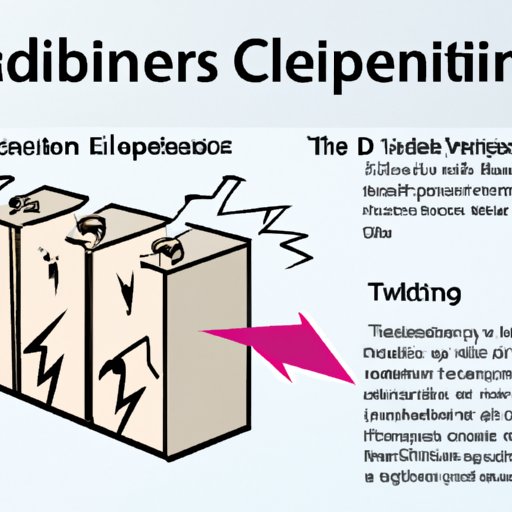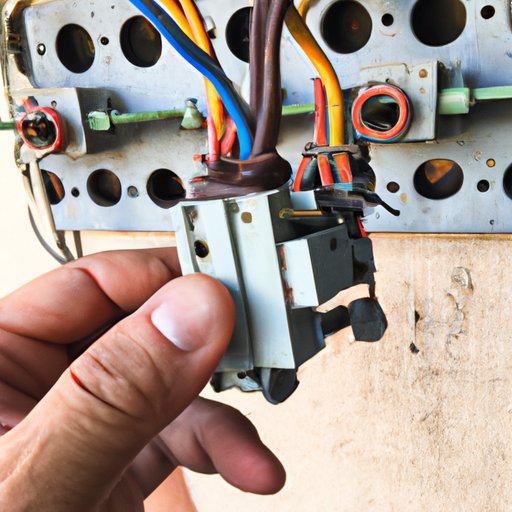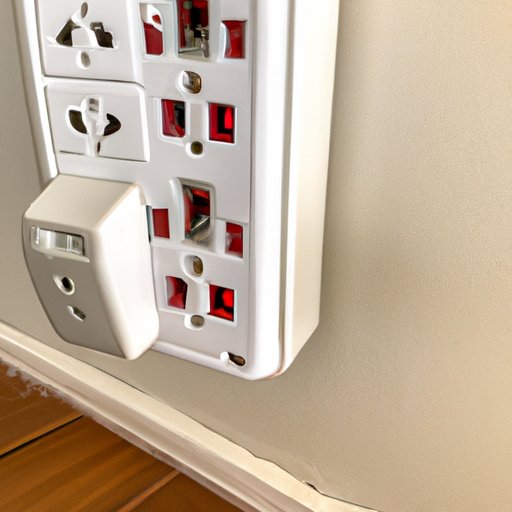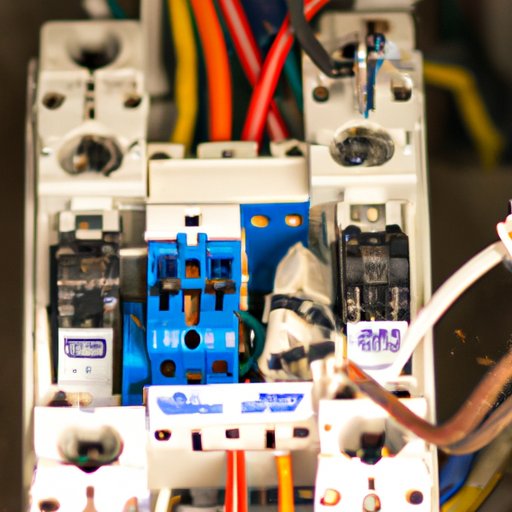Introduction
Circuit breakers are an important part of your home’s electrical system. Designed to protect your electrical system from overloads and short circuits, they are the first line of defense against potentially dangerous power surges. Unfortunately, they can sometimes trip without warning, leaving you with an inconvenient interruption in your electricity supply.
Definition of a Circuit Breaker
A circuit breaker is an electrical switch that automatically interrupts the flow of current when it detects an excessive amount of electricity. This helps to prevent damage to your home’s electrical system by preventing overloading or short circuiting. When the circuit breaker trips, it will cut off the power to whatever area it is protecting, often resulting in a loss of electricity in that area.
Overview of the Problem
When a circuit breaker trips, it can be a frustrating and confusing experience. Not only does it disrupt your electrical supply, but it also leaves you trying to figure out why it happened in the first place. There are several potential reasons why your circuit breaker might be tripping, ranging from overloaded circuits to poor wiring connections. It is important to understand these potential causes in order to address the issue and prevent further interruptions.

Identifying Common Causes of Circuit Breaker Tripping
There are several common causes of circuit breaker tripping that you should be aware of. Knowing the potential issues can help you to diagnose the source of the problem and take corrective action.
Overloaded Circuits
One of the most common causes of circuit breaker tripping is an overloaded circuit. This occurs when too many devices are plugged into one outlet, drawing more power than the circuit is designed to handle. To prevent this from happening, it is important to spread out the load across multiple outlets, or use a power strip with an overload protection feature.
Poor Wiring Connections
Another potential cause of circuit breaker tripping is poor wiring connections. Over time, wires can become loose or corroded, leading to an interruption in the electrical flow. If you suspect this is the case, it is important to have a qualified electrician inspect the wiring and make any necessary repairs.
Short Circuits
Short circuits can also cause circuit breaker tripping. This occurs when two wires come into contact with each other, allowing electricity to flow between them and causing an overload. To prevent this from happening, it is important to inspect all wiring connections regularly and replace any damaged or worn wires.
What to Do When Your Circuit Breaker is Constantly Tripping
If your circuit breaker is constantly tripping, there are several steps you can take to help resolve the issue. The first thing you should do is try resetting the circuit breaker. You can do this by turning off all appliances connected to the circuit and then flipping the circuit breaker switch back on. If the circuit breaker continues to trip, you may need to investigate further.
Resetting the Circuit Breaker
The first step in addressing a tripping circuit breaker is to reset it. This can be done simply by turning off all appliances connected to the circuit and then flipping the circuit breaker switch back on. This will reset the circuit and allow you to determine if the issue has been resolved.
Turning off Unnecessary Appliances
If the circuit breaker continues to trip after resetting, it may be due to too much power being drawn from the circuit. In this case, it is important to turn off any unnecessary appliances that are connected to the circuit. This will reduce the load on the circuit and may help to resolve the issue.
Identifying Electrical Issues
If neither of these steps resolves the issue, it is likely that there is an electrical issue that needs to be addressed. In this case, it is important to hire a qualified electrician to inspect the wiring and electrical components of your home’s electrical system.
Troubleshooting Tips for Diagnosing Why Your Circuit Breaker is Tripping
Once you have identified the potential electrical issues, it is important to begin troubleshooting in order to determine the cause of the circuit breaker tripping. There are several steps you can take to investigate the issue further.
Checking Wire Connections
The first step in troubleshooting is to check all wire connections. Make sure that all wires are securely connected and that no wires are loose or frayed. Also, check for any signs of corrosion, as this can indicate a potential short circuit.
Inspecting Wiring and Electrical Components
Next, you will want to inspect all wiring and electrical components for signs of wear or damage. Look for any broken or cracked wires, loose connections, or signs of overheating. If any of these are present, it is important to have a qualified electrician repair the issue.
Testing Voltage Levels
Finally, you should check the voltage levels of the circuit. A qualified electrician can use a voltmeter to test the voltage levels and determine if they are within the normal range. If the voltage levels are too high, it could indicate an issue with the wiring or electrical components.

How to Inspect Wiring and Electrical Components to Determine the Cause of Circuit Breaker Tripping
In order to properly inspect wiring and electrical components, it is important to follow certain safety protocols. Before beginning the inspection, make sure that all power sources are turned off and that you are wearing protective equipment. Additionally, you should make sure to use the correct tools for the job, such as insulated pliers and a voltage tester.
Checking for Loose Connections
The first step in inspecting wiring and electrical components is to check for any loose connections. Make sure that all wires are securely connected and that no wires are frayed or exposed. If any wires are loose, it is important to have a qualified electrician make the necessary repairs.
Examining Corrosion
Next, you should examine the wiring and electrical components for any signs of corrosion. Corrosion can indicate that a short circuit is occurring, which can lead to circuit breaker tripping. If you notice any corrosion, it is important to have a qualified electrician inspect the wiring and replace any damaged components.
Evaluating Circuit Loads
Finally, you should evaluate the circuit loads of the affected area. This can help to identify any overloaded circuits that may be causing the circuit breaker to trip. If there is an overloaded circuit, it is important to move some of the devices to another circuit or use a power strip with an overload protection feature.

The Benefits of Installing a Surge Protector to Prevent Circuit Breaker Tripping
Installing a surge protector can help to prevent circuit breaker tripping due to power surges. Surge protectors work by diverting excess electricity away from your home’s electrical system and into the ground. This helps to protect your electrical system from damage and can help to prevent circuit breaker tripping.
Reducing Power Surges
Surge protectors are designed to reduce the risk of power surges, which can cause circuit breakers to trip. By diverting excess electricity away from your home’s electrical system, surge protectors can help to protect your electrical system from damage.
Increasing Electrical Safety
Surge protectors can also help to increase the safety of your home’s electrical system. By preventing power surges, they can help to reduce the risk of electrical fires and other hazards. Additionally, they can help to protect sensitive electronics from damage.
Protecting Electronics
Finally, surge protectors can help to protect your electronics from damage caused by power surges. By diverting excess electricity away from your devices, surge protectors can help to ensure that your electronics remain safe and functioning properly.

Advice on Hiring an Electrician to Help Address Circuit Breaker Tripping Issues
If you are experiencing issues with your circuit breaker tripping, it is important to hire a qualified electrician to help you address the problem. An electrician can help to inspect your home’s electrical system and identify any potential issues that may be causing the circuit breaker to trip.
Understanding Local Requirements
Before hiring an electrician, it is important to understand the local requirements for electrical work. In some areas, it is required that all electrical work be performed by a licensed professional. Check with your local government to make sure that the electrician you are considering is properly licensed and insured.
Finding a Licensed Professional
Once you have determined that the electrician is properly licensed, you can begin your search for a qualified professional. Look for reviews online or ask friends and family members for recommendations. It is important to find an experienced electrician who is up-to-date on the latest safety regulations.
Adhering to Safety Regulations
Finally, it is important to make sure that the electrician follows all safety regulations. Ask questions about their safety protocols and make sure that they are adhering to all applicable codes and standards. This will help to ensure that the work is performed safely and correctly.
Conclusion
Circuit breakers are an important part of your home’s electrical system, but they can sometimes trip without warning. Understanding the common causes of circuit breaker tripping, such as overloaded circuits and poor wiring connections, can help you to diagnose and address the issue. Additionally, installing a surge protector and hiring a qualified electrician can help to protect your home’s electrical system from damage and ensure that the work is done safely and correctly.
(Note: Is this article not meeting your expectations? Do you have knowledge or insights to share? Unlock new opportunities and expand your reach by joining our authors team. Click Registration to join us and share your expertise with our readers.)
